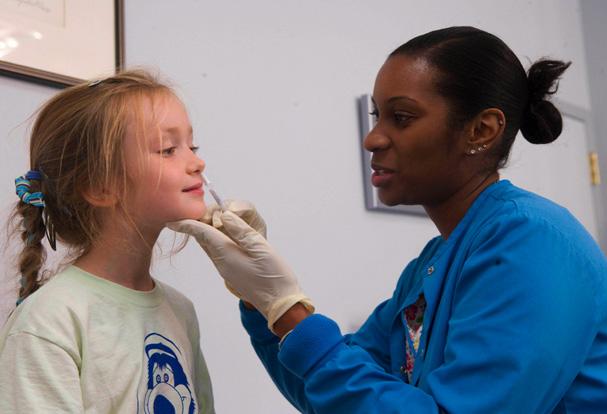
Nurse administers FluMist vaccine to a patient.
Credit:
MedImmune
NIAID pursues collaborative relationships to develop and commercialize discoveries made in its intramural laboratories. Several public health interventions, including the first licensed hepatitis A vaccine, the first rapid diagnostic test for malaria, and the only preventative therapy for respiratory syncytial virus, were developed through collaborations between NIAID investigators and the broader scientific community. NIAID uses a variety of tools to transfer and develop technologies through these partnerships, including the following:
- Cooperative Research and Development Agreements (CRADAs) formalize partnerships between the government and industry on research and development projects of mutual interest. Each party brings to the partnership complementary assets, including funds, intellectual property, scientific and technical capabilities, and other expertise, to achieve project goals. CRADAs provide incentives to accelerate the commercialization of innovations arising from research conducted by NIAID and by industry.
- Biological materials licenses grant companies the right to make, use, and/or sell commercially useful biological materials invented in NIAID laboratories. This type of license typically is nonexclusive and helps to commercialize biological materials which cannot or will not obtain patent protection.

